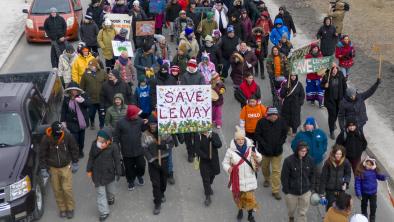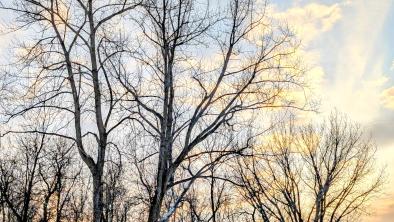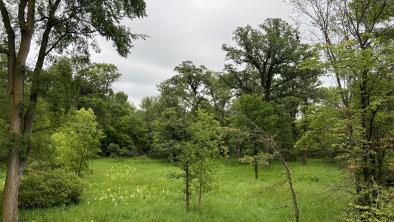New Protection Available for East Shore Wilderness Area: A review of Bill 6

The East Side Traditional Lands Planning and Special Protected Areas Act
Province introduces legislation that will give legal status to land-use plans prepared by aboriginal communities located in the East Side.
For several years, the Wilderness Committee has advocated for protection and permanent designation of the Poplar Nanowin Park Reserve, as requested by the Poplar River First Nation. At the press conference at the Manitoba Legislature after the introduction of Bill 6, Poplar River spoke in support of the Bill. "This legal tool is important for us at Poplar River as we finalize our land-use plan," said Chief Russell Lambert of the Poplar River First Nation.
Until the introduction of Bill 6, the only protected status a community could seek for their lands was provincial park status, through the Park Reserve system that has been in place since 1997. Many communities feel that Manitoba government management of their traditional lands as a park is not necessary, yet they wish to ensure that industrial resource development does not affect their territories. Even though aboriginal communities in the East Shore Area have been working on land-use plans, there has been no guarantee the plans would be legally recognized or used to provide protection for their lands.
The Manitoba and Canadian governments have a legal right to ensure the traditional activities of all First Nations are not infringed upon by industrial development, and First Nations are given meaningful opportunity to make decisions on their traditional territories. Bill 6 is a logical and welcome step that will fulfill this obligation.
Across Canada, two divergent examples of traditional territory management illustrate the need for legislation like Bill 6:
Kitchenuhmaykoosib Inninuwug (KI) First Nation, in the Ontario section of the East Shore Wilderness Area, is embroiled in a legal battle with a mining exploration company, Platinex, over exploration on their traditional territory. The community did not want Platinex operating on their traditional territory, yet the century-old Mining Act in Ontario allows free access to all public land for mining exploration. When the community tried to stop the exploration with a peaceful blockade, the leaders of the community were jailed and Platinex launched a $10 billion lawsuit against KI. The KI First Nation does not have legal control over decision-making in their traditional territory, which is unconstitutional.
On the other end of the scale is The Stein Valley Nlaka'pamux Heritage Park in British Columbia. This area is preserved for both the ecological and recreational benefit of the public as well as the traditional uses of the aboriginal communities, and is managed by the Lytton First Nation and the government of British Columbia. The Management Plan (June, 2000) defines the park with the following statements in its introduction:
"Stein Valley Nlaka'pamux Heritage Park is an intact wilderness watershed containing world class cultural features, provincially significant wilderness values and a diversity of undisturbed ecosystems."
"The Park Vision and Role, as described in the Management Plan, maintain these values in perpetuity."
"Park management will continue to highlight the cultural heritage of the Lytton Nlaka'pamux in the watershed and to protect, preserve and encourage traditional Nlaka'pamux and Stl'atl'imx sustenance, cultural, spiritual and ceremonial activities in the area."
What the Wilderness Committee believes is needed for the East Side is:
- most of this boreal region becoming large, interconnected protected areas
- ecologically sustainable, community-driven economies
- meaningful community consultations and community-based land-use plans
- First Nation consent before industrial development in traditional territories
Bill 6 is a welcome step on a long path to proper ecological and cultural protection in Manitoba.
Bill 6 can be found on the Manitoba government website at:
http://web2.gov.mb.ca/bills/39-3/b006e.php



